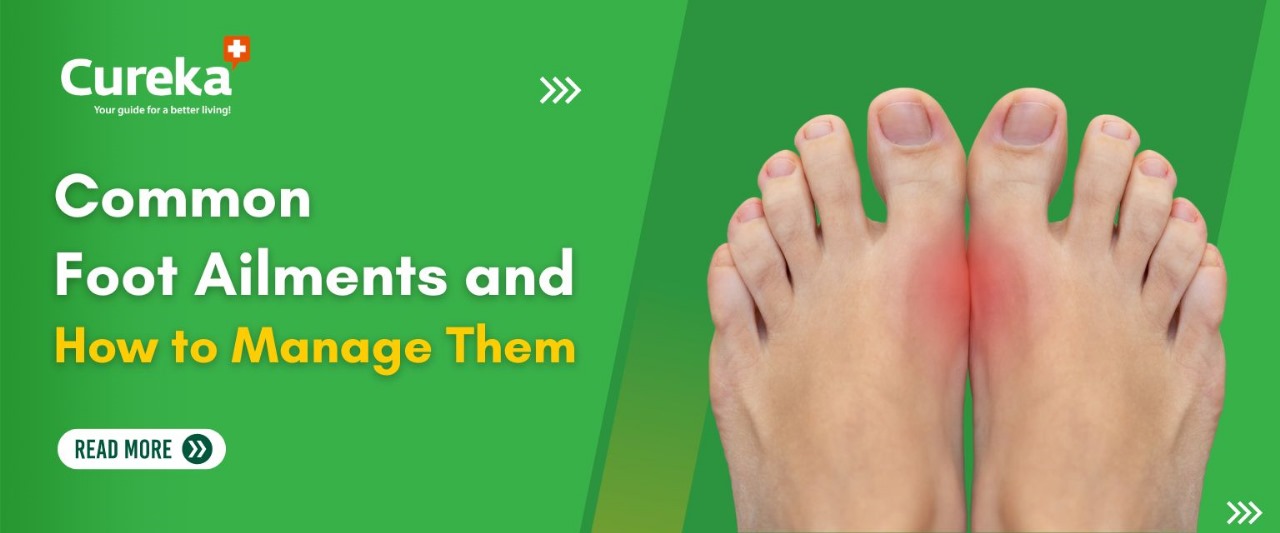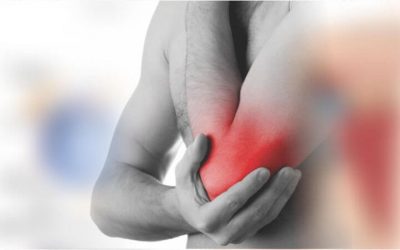Common Foot Ailments and How to Manage Them
Not only our foot is tucked in shoes and socks but the foot ailments too. Everyone is least bothered about foot care. Only the person with foot misalignment or who face any trouble walking will understand that foot ailments are also a serious issue as that determines your walk pattern which gives you confidence, appearance and a good impression. From pesky blisters to stubborn ingrown toenails, our feet face a range of challenges that can disrupt our daily lives. You don’t have to deal with the pain in every step. Understanding about these ailments can give you relief. Whether you’re an athlete pushing your limits or someone who spends long hours on their feet, this guide is for you.
Bunions
Bunions are bump on the side of the big toe that causes pain when you walk. It’s most commonly seen in women compared to men. People who wear ill-fitting shoes, narrow shoes are at the risk of developing bunions. The skin might also be sore or red. If your work nature is of prolonged standing hours, that might also be a cause for bunions. These bony bumps can be corrected with orthopaedic aids like bunion correcting sleeves, bunion splints. Make sure that you wear the appropriate aid as per the advice of orthopaedical surgeon.
Plantar Fasciitis
Plantar fasciitis is a condition which arises due to the inflammation of the plantar fascia, a thick band of tissue that runs across the bottom of each foot and connects the heel bone to the toes. Mostly the sufferer can feel a stabbing pain with the first morning step. As you move on the pain decreases. It might also cause pain when you stand or sit for longer hours and suddenly move. Commonly seen in obese individuals, runners, and in anyone who stands for longer hours.
Achilles tendonitis
Achilles tendon is the largest tendon in the body. This connects the calf muscle to the heel. Inflammation in this is known as Achilles tendonitis. It causes pain along the back of the leg. It can also cause swelling, stiffness in the area. It you find it difficult to stand on your toe you might have this condition. Exercises that stretch the calf muscles, physiotherapy, ice packs, and orthopaedic aids are suggested to support the healing process.
Foot drop
Foot drop, also known as drop foot, refers to the challenge of rising the front part of the foot. This condition can lead to the dragging of the front of the foot along the ground during walking. It often results from weakness or paralysis of the muscles that lift the foot. Foot drop can be caused by various factors, including nerve damage or muscle disorders. Treatment options for foot drop aim to address the underlying cause and may include physical therapy, braces, splints or surgery.
Clubfoot
Clubfoot is common in children. Clubfoot encompasses various foot abnormalities typically evident at birth (congenital), characterized by the twisting or misplacement of your baby’s foot. This condition arises from shortened tendons, which connect muscles to bones. Can be corrected with cast under the guidance of orthopaedic surgeon.
Flat foot
Flatfoot is a condition where the arches of the feet are flattened, causing the entire sole to make contact with the ground. This can occur due to a variety of reasons, including genetics, injury, or ligament weakness. While some people with flat feet experience no symptoms, others may feel pain or discomfort, particularly in the arches or heels. Treatment for flat feet often involves supportive footwear, orthotic inserts, stretching exercises, and in some cases, surgery to correct severe deformities or alleviate pain. If you have flatfoot, foot cannot balance the body weight properly.
Calcaneal spur
A calcaneal spur, commonly referred to as a heel spur, is a projection that forms on the underside of the heel bone, known as the calcaneus. It typically forms in response to repeated stress or strain on the foot, such as from activities like running or jumping, or from wearing poorly fitting shoes. While many people with heel spurs experience no symptoms, some may feel pain or tenderness in the heel, especially when standing or walking. Treatment for heel spurs usually focuses on relieving pain and reducing inflammation through methods like rest, ice therapy, stretching exercises, orthotic devices, or, in severe cases, corticosteroid injections or surgery.
Common foot issues
Above discussed foot ailments are related to anatomy of the foot. There are also foot conditions that occur on the external foot region like athletes’ foot, plantar warts, corns, calluses, cracked heels, tingling and numbness.
- Athlete’s foot is a fungal infection that typically affects the skin between the toes, causing itching, burning, and redness.
- Plantar warts are caused by the human papillomavirus (HPV) and appear as small, rough growths on the soles of the feet, often causing discomfort or pain when walking.
- Corns are areas of thickened skin that develop in response to repeated friction or pressure, usually on the toes or the balls of the feet.
- Calluses are similar to corns but are larger and more widespread, forming on areas of the skin exposed to constant pressure or friction.
- Cracked heels occur when the skin on the heels becomes dry and thickened, leading to fissures or splits that can be painful and prone to infection.
- Tingling and numbness in the feet can result from various causes, such as nerve damage (neuropathy), poor circulation, or pressure on nerves, and may be associated with underlying conditions like diabetes or peripheral artery disease.
Conclusion
Our feet take us to explore the world. But are we giving the best care for it? We do care only when we feel the pain or face any discomfort. We should realize that foot care is essential in preventing and managing the foot ailments. It’s important to seek medical attention for proper diagnosis and treatment of these foot conditions to prevent complications and ensure optimal foot health.














